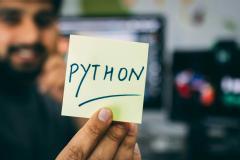- SQL Introduction
- Introduction to Data Science
- SQL Basic Overview
- Query Language
- SQL Server
- MySQL
- Oracle Database
- How Python connected to Machine Learning
- Python as a tool for Machine Learning Implementation
- Understanding Data Science
- The Data Science Life Cycle
- Understanding Artificial Intelligence (AI)
- Overview of Implementation of Artificial Intelligence
- Machine Learning
- Deep Learning
- Artificial Neural Networks (ANN)
- Natural Language Processing (NLP)
- SQL Database User
- SQL Database
- SQL Table
- Connect with System User
- Create a new Database User
- Log into new User
- Create Database
- Delete or Drop Database
- Use Database
- Create Database in SQL Server
- Rename Database
- Create table
- Create Table in SQL Server
- Delete or Drop table
- Insert Data into table
- Select Distinct
- Select Top
- Where Clause
- Aliases
- Update Table
- AND, OR, NOT
- Constraints Introduction
- Not Null
- Unique
- Primary Key
- Foreign Key
- Check
- SQL Constraints
- IN
- Between
- Order By
- Group By
- Rank
- Dense_Rank
- Having
- Exists
- ANY and AL
- CASE Statement
- Select Into
- Alter Table
- Order of execution of a Query
- Backup in SQL Server
- Database Restore
- Mathematical Functions
- Mathematical Functions in SQL Server
- Backup and Restore
- Introduction
- Min
- Max
- Count
- Avg
- Sum
- SQL Aggregate Function
- Default
- Index
- Auto Increment Field
- Cascading referential integrity constraint
- Identity Column in SQL Server
- Introduction to Python
- List, Ranges & Tuples in Python
- Python Dictionaries and Sets
- Understanding Lists in Python
- Understanding Iterators
- Generators, Comprehensions and Lambda Expressions
- Understanding and using Ranges
- Introduction to the section
- Python Dictionaries and More on Dictionaries
- Sets and Python Sets Examples
- What is Python and history of Python
- Python-2 and Python-3 differences
- Install Python and Environment Setup
- Python Identifiers, Keywords and Indentation
- Comments and document interlude in Python
- Command line arguments and Getting User Input
- Python Basic Data Types and Variables
- PYTHON
- Input and Output in Python
- Reading and writing text files
- Appending to Files
- Writing Binary Files Manually and using Pickle Module
- Python Functions
- Useful additions
- Python user defined functions
- Python packages functions
- The anonymous Functions
- Loops and statement in Python
- Python Modules & Packages
- Collections named tuples, default dicts
- Debugging and breakpoints, Using IDEs
- Understanding Data: A Comprehensive Guide
- Importance of Data Understanding
- Role in Decision Making
- Data as the Foundation of Analysis
- Unstructured Data
- Semi-Structured Data
- JSON (JavaScript Object Notation)
- XML (eXtensible Markup Language)
- Introduction to Data Understanding
- Types of Data
- Structured Data
- Tabular Data
- CSV (Comma-Separated Values) Files
- Relational Databases
- Textual Data
- Images
- Audio and Speech Data
- Video Data
- What is a CSV File?
- Advantages and Limitations of CSV
- Reading and Writing CSV Files in Programming
- Dealing with Missing Data
- Handling Noisy and Inconsistent Data
- CSV Files: Structure and Usage
- Tools and Techniques for Data Understanding
- Challenges in Data Understanding
- Data Visualization
- Charts and Graphs
- Heatmaps and Scatter Plots
- Understanding Rows and Columns
- Data Types and Formats
- Descriptive Statistics for Tabular Data
- Exploring Tabular Data
- Data Acquisition
- Data Inspection
- Data Cleaning
- Data Transformation
- Data Integration
- Data Validation and Quality
- Documentation and reporting
- Data Manipulation using Python
- Understanding different types of Data
- Understanding Data Extraction
- Managing Raw and Processed Data
- Wrangling Data using Python
- Central Tendency
- Dispersion of Data Point
- Mean
- Mode
- Median
- Variance
- Standard Deviation
- Type of Statistics:
- Probability Theory
- Descriptive
- MEAN
- Mode
- Median
- Standard Deviation
- Variation
- Range
- Frequency Tables
- Probability Density Function
- Probability Mass Function
- Understanding Conditional Probability
- Exploratory Data Analysis (EDA)
- Working with Numpy, Scipy and Pandas,Scikit-learn
- Inferential
- Probability Theorem
- Distributions
- P-Value
- T-Test
- Chi-square
- ANOVA
- Null Hypothesis
- Data Pre-Processing:
- Python Packages & Libraries:
- Data Exploration and Data Manipulation:
- Understanding Data in Mathematical
- Making Data ready for Algorithms
- Statsmodel
- Numpy
- Scipy
- Pandas
- Matplotlib
- Seaborn
- Beautiful Soup
- Exploration:
- EDA
- Variables
- Univariate
- Bivariate
- Missing Value
- Outlier
- Transformation
- Creation
- Filter
- Cleaning
- Dataframes
- Aggregating
- Indexing
- Slicing
- Reshaping
- Pivoting
- Manipulation:
- Machine Learning
- Understand what is a Machine Learning Model
- Various Machine Learning Models
- Choosing the Right Model
- Training and Evaluating the Model
- Improving the Performance of the Model
- Understanding the Machine Learning Algorithms
- Importance of Algorithms in Machine Learning
- Exploring different types of Machine Learning Algorithms
- Understanding Predictive Model
- Working with Linear Regression
- Working with Polynomial Regression
- Understanding Multi Level Models
- Selecting the Right Model or Model Selection
- Need for selecting the Right Model
- Understanding Algorithm Boosting
- Various Types of Algorithm Boosting
- Understanding Adaptive Boosting
- Understanding Machine Learning Models
- More on Models
- Understanding Machine Learning Algorithms
- Supervised Learning
- Unsupervised Learning
- Reinforcement Learning
- Exploring Supervised Learning Algorithms
- Exploring Un-Supervised Learning Algorithms
- Understanding the Supervised Learning Algorithm
- Understanding Classifications
- Working with different types of Classifications
- Learning and Implementing Classifications
- Understanding Unsupervised Learning
- Understanding Clustering and its uses
- Exploring K-means
- Time Series Analysis (TSA)
- Logistic Regression
- Naïve Bayes Classifier
- Nearest Neighbour
- Support Vector Machines (SVM)
- Decision Trees
- Boosted Trees
- Random Forest
- Understanding Time Series Analysis
- Advantages of using TSA
- Understanding various components of TSA
- AR and MA Models
- Understanding Stationarity
- Implementing Forecasting using TSA
- Understanding Hypothesis Testing
- What is Hypothesis Testing in Machine Learning
- Advantages of using Hypothesis Testing
- Basics of Hypothesis
- Parameters of Hypothesis Testing
- The P-Value
- Types of Tests
- Exploring Hierarchical Clustering
- Understanding Dimensionality Reduction
- What is K-means Clustering
- How K-means Clustering Algorithm Works
- Implementing K-means Clustering
- Importance of Dimensions
- Purpose and advantages of Dimensionality Reduction
- Understanding Principal Component Analysis (PCA)
- Understanding Linear Discriminant Analysis (LDA)
- Understanding Hierarchical Clustering
- Implementing Hierarchical Clustering
- Normalization
- Standard Normalization
- Null Hypothesis
- Alternative Hypothesis
- Overview Reinforcement Learning Algorithm
- Hands on Projects
- What is Hypothesis Testing in Machine Learning
- Advantages of using Hypothesis Testing
- Basics of Hypothesis
- T Test
- Z Test
- ANOVA Test
- Chi-Square Test





